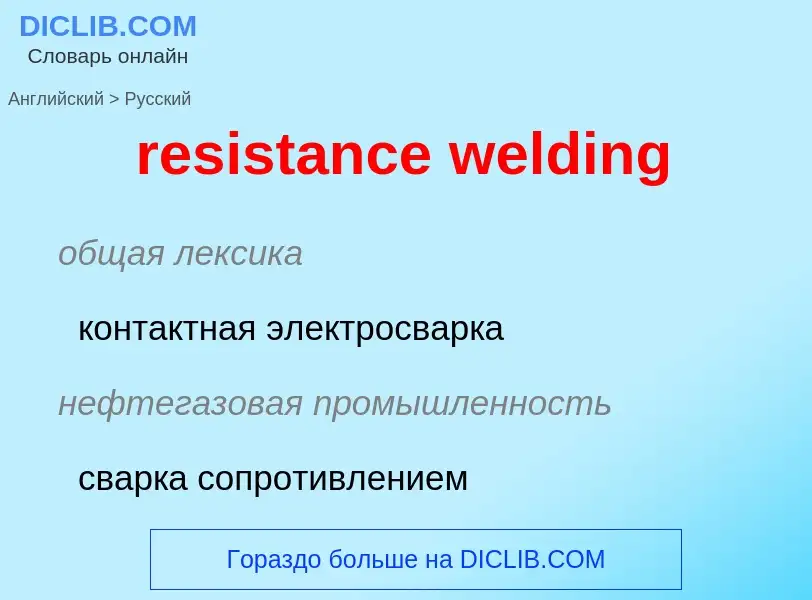Перевод и анализ слов искусственным интеллектом ChatGPT
На этой странице Вы можете получить подробный анализ слова или словосочетания, произведенный с помощью лучшей на сегодняшний день технологии искусственного интеллекта:
- как употребляется слово
- частота употребления
- используется оно чаще в устной или письменной речи
- варианты перевода слова
- примеры употребления (несколько фраз с переводом)
- этимология
resistance welding - перевод на русский
общая лексика
контактная электросварка
нефтегазовая промышленность
сварка сопротивлением
контактная сварка
общая лексика
роликовый шов
общая лексика
линейная сварка
строительное дело
роликовая сварка
нефтегазовая промышленность
сварка прямолинейным швом
строительное дело
электросварка
общая лексика
контактная точечная сварка
Википедия
Electric resistance welding (ERW) is a welding process where metal parts in contact are permanently joined by heating them with an electric current, melting the metal at the joint. Electric resistance welding is widely used, for example, in manufacture of steel pipe and in assembly of bodies for automobiles. The electric current can be supplied to electrodes that also apply clamping pressure, or may be induced by an external magnetic field. The electric resistance welding process can be further classified by the geometry of the weld and the method of applying pressure to the joint: spot welding, seam welding, flash welding, projection welding, for example. Some factors influencing heat or welding temperatures are the proportions of the workpieces, the metal coating or the lack of coating, the electrode materials, electrode geometry, electrode pressing force, electrical current and length of welding time. Small pools of molten metal are formed at the point of most electrical resistance (the connecting or "faying" surfaces) as an electrical current (100–100,000 A) is passed through the metal. In general, resistance welding methods are efficient and cause little pollution, but their applications are limited to relatively thin materials.


